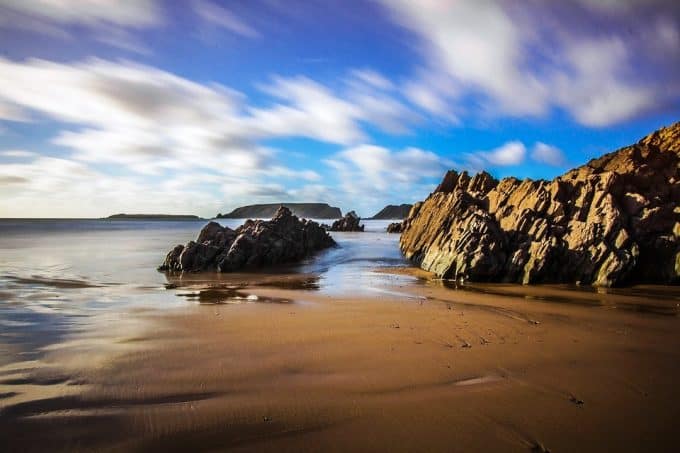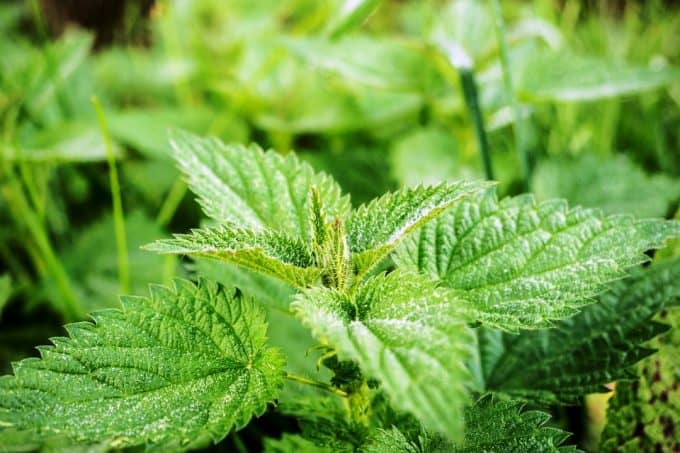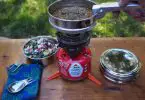Do you plan on taking a riskier hiking trip in the wild on possibly uncharted territory? Are you thinking about your next survival mission or are you a prepper? Then you definitely need to know how to find food in the wild.
The best thing you could do is never eat something completely unknown. So if you don’t know what plant, insect or critter you’re sinking your teeth into, you’d better skip that meal, even if the place is crawling with those. The real problem becomes obvious when nourishing and safe food is scarce, which is why we wrote this article.

We’ll tell you all about which foods are safe for eating and which are not, including plants and insects. We’ll give you some tips and tricks on where to find these foods, how to catch some unsuspecting critters and even how to prepare them in order to make them more palatable.
Insects
This is our go-to food of choice in the wild because they’re mostly safe to eat, easy to find and offer plenty of calories. They’re also quite filled with protein, which is essential for giving your muscles the stuff they need so you won’t feel weak.
So how do insects look like? Yes, this is actually a valid question since not all creepy crawlies fit into this category. Insects have:
- A skeleton that’s on the outside of their bodies
- A body divided into three parts
- Six legs
- Just a single pair of antennae
Basically, if something doesn’t fit this description, don’t eat it.
Take spiders for instance. These suckers have 8 legs, so they’re to be avoided at any cost. Same goes for ticks. So you should stick with insects like:
- Ants
- Crickets
- Grasshoppers
- Termites
There are also plenty of that in the wild, you just have to look under a rock or a log because they generally prefer dark, moist places. Termites generally reside in wood and grasshoppers love big, tall grass, while ants are the easiest to follow to their colony so you can have a true feast. You can even munch on a scorpion if you find one, but remember to remove its poisonous tail first.
There are some other rules to consider here like:
- Don’t eat an insect with a hairy or soft skeleton like bees. Only choose insects with a tough exoskeleton.
- Don’t eat an insect which you know is venomous.
- Don’t eat brightly colored insects.
- Remove the head of an insect you want to eat.
This last rule applies to anything you can find in the wild, including:
- Bugs
- Plants
- Fish
- Amphibians
That’s because bright colors signal danger, just like in the human world. This has been nature’s way to let predators know that something is poisonous or venomous, which is why you should leave them all be.
Mollusks and Worms
These are a special kind of creepy crawlies, but they’re delicious, easy to find and to catch, as well as packed with protein and calories. So if you’re stranded, these are a good bet, even if they’re quite gooey and therefore have a weird texture.
You can find mollusks and worms in water, muddy places and even underground. You should dig a bit of a hole in places with wet ground, or near ponds and you’ll be sure to find plenty of those. However, there are some precautions to take into account here, like:
- Some bigger slugs need to be gutted before eating.
- You should remove the slime before eating them.
- Cook the slugs and worms you find because they might have bacteria and parasites.
Snakes
You can definitely feast on snakes too, provided you’re not to grossed out to catch them first. You can find these in the same places as slugs and insects, so generally under rocks or near water. However, there are some innocent prairie snakes you can find in open fields and short grass.
Just remember to avoid any vivid and bright colors because those signal a poisonous snake. Go after green or earth-colored snakes instead, especially smaller ones. You have to catch them by their heads, with a bigger stick, then use a knife to remove the head immediately.

Remember to gut the snake before eating it, even if it looks pretty small. You can keep the skin on if you like, it will give it a crunchy texture, and you can cook them for extra safety. And some swear their meat tastes like chicken, so you’ve got that going for you.
Birds and Eggs
These are a fairly safe bet too in the wild, especially if you know what sort of bird you’re getting. But the chances of it being venomous are really small, you just have to have enough dexterity and a good weapon to catch it. There are a few things you can do in order to catch a bird or its young ones:
- Follow birds to their nests, this is where they keep their eggs.
- You might also find some helpless young birds that can’t fly in the nest.
- You can come back at nighttime and catch the bird while it’s sleeping.
However, remember not to touch the nest with your bare hands if the bird is away. That will impregnate the nest with your smell and so the bird might not stay there for the night.
You can also go bird hunting if you’re courageous enough. So you can set a bird trap for pigeons with some bread crumbs, for instance. Or you can improvise a sling if you don’t have a gun handy, but this takes some real skills.
Seafood
If you’re near a river, lake or sea, you’ve got amazing chances of landing good, protein-filled, calorie-rich food. Among these, you can remember:
- Algae
- Clams
- Crabs
- Crustaceans
- Eels
- Isopodes
- Fish
- Oysters
But you have to be smart about how to catch these, too. You have to go looking at low tide because you’re more likely to find these hanging out on the rocks when the water ebbs. So the inner tidal areas are your safest bet.

You can also go fishing, but you have to improvise a rod first. To do that, you need to find a long, flexible stick and use a piece of rope. Add a worm or a piece of chewed up food at the end, and you’ve got yourself a great booby trap for fish. If you have a big net-like material with you, like that from a hammock, you can also use that in addition to the rod.
Animals
From small critters to coyotes to deer and wild boar, the forest can be your oyster. If you have a gun and know how to shoot it, you’ve got your back covered and your belly full.
However, if you don’t have a gun, animals are pretty hard to find. Sure, you can use a knife or improvise a spear, which is great if you have hunting skills, to begin with. But if you’re not a hunter, animals are not food sources to count on because you’ll invest a lot of time and energy in catching them, with a small chance you can do that.
So to catch animals without skills or a gun, you need to:
- Set traps for them or use a sling.
- Don’t set traps with food near your campsite, that will attract bigger predators.
- Follow foxes and badgers to their burrows.
- Don’t eat discarded carcasses, they might be filled with parasites.
- Cook any animal you manage to kill.
- Gut the animals before killing them, and remove their fur too.
Plants and Fruit
This is a tricky section seeing as it’s so difficult to realize which plants are edible. So we would advise you to do your research first and memorize exactly which plants and fruit are safe to eat in your area. Or you can use an app for that if you can.
Since the risk of eating a toxic plant is death, and not just simple food poisoning, you must:
- Steer clear of plants that have white or yellow berries.
- Avoid mushrooms since they’re mostly toxic.
- Never eat plants that have thorns, spines or hair.
- Avoid bitter tastes or anything that smells tricky.
- If it has shiny leaves, don’t try to eat it.
- Leaves in groups of three are an indicator of poison.
- Flowers that look like little umbrellas or bells are most likely from a poisonous plant.
- If a plant oozes out a white or colorless sap, leave it alone.
- If there are beans or bulbs inside a pod, that plant isn’t good.
- Don’t eat plants with leaves shaped like those of carrots, parsley or parsnip.
- If there are pink, purple or black spurs on the plant’s grain head, don’t eat it.
Don’t try to cook the poison away, that’s not how it works. You will simply get rid of the water that’s in the plant, but the substances that are bad for your body are still in there, it’s not like the killing of a parasite. Of course, not all these rules stand for all plants. For instance, cacti are safe to eat even if they have thorns, and clovers are good though they have three leaves.
There is also the edibility test you can apply, but we’re sort of ambivalent about it. This involves you rubbing the plant on your hand to see if you get an irritation. If not, you can hold it in your mouth a bit to see if you should spit it out or not.
However, this should be a last resort for you. You can still get food poisoning or an irritation that can put you in anaphylactic shock even if the contact with the plant is minimal. So if you’re really starving, haven’t eaten in days and there are little chances of you ever finding something to eat, this test might save your life.
That said, what are some of the plants you can eat in the wild? Here’s a short list of them below.
Amaranth
- You can eat every part of it and it has a lot of calories.
- Don’t eat its thorns and spines.
- It has oxalic acid in the leaves, which means you need to boil it first to remove the nitrates.
- Don’t drink the water in which you boiled it since it has dangerous nitrates.
Asparagus
- Great source of vitamins and minerals.
- You can eat it raw.
- Has a thinner stalk than its store-bought cousin.
Burdock
- The flower heads are purple and look like thistles.
- The leaves, roots, and stalks are good to eat.
- You can eat it raw, but the leaves should generally be boiled as they’re bitter.
Cattail
- You find it near freshwater.
- You can boil it or eat it raw, but wash it first.
- You can eat most of it, including the rootstock that’s hidden underground.
- The white part of the stem is the best tasting one.
Clovers
- You can find them in open fields.
- They have three-folded leaves, but that doesn’t make them poisonous.
- You can eat them raw or boiled too.
Chicory
- This is a bush and has very small, bluish flowers.
- You can eat all parts of it, including the flowers.
- You can eat it raw, but the roots taste better when they’re boiled.
Chickweed
- The leaves are big and heavy, with white flowers.
- You find it in cold, arctic or temperate areas in the summer.
- The leaves can be eaten raw or boiled.
Wood sorrel
- It’s a widespread plant.
- It also doubles as medicine for mouth sores.
- It helps with the thirst pangs too.
- You can eat the leaves raw.
- You can boil the roots.
Dandelion
- You can eat every part of it, including the roots.
- You can boil the leaves first since they’re very bitter.
- The roots should be boiled too.
- The flower can be eaten raw.
- The water in which you boiled the leaves and roots is safe for drinking.
Field pennycress
- The leaves and seeds don’t have to be boiled.
- Don’t eat it if it’s growing on a dangerous, chemical-filled soil.
Fireweed
- It has a purple flower and leaves with circular veins.
- The best way to eat it is when it’s young.
- Old plants are bitter, so they need to be boiled.
Green seaweed
- Clean it with fresh water and leave it out to dry first.
- You can eat it raw too, but it tastes better in a soup.
- If you have some fish or crustaceans on your plate, you can make a seaweed salad.
Plantain
- It has oval leaves with short stems that hover over the ground.
- The leaves taste better when they’ve barely sprouted.
Prickly pear cactus
- This is a desert plant you’ll find in North America.
- Its fruit is shaped like a pear.
- You can eat it whole, including the stem.
- The stem should be boiled first.
Purslane
-
- It’s small and has wide leaves.
- It tastes sour so you can boil it first, though it’s safe to eat it raw too.
- You can find it during the summer.
Sheep sorrel
- It grows all over the fields and woods.
- It’s very tall and has a red stem.
- The leaves are safe for raw eating but don’t eat huge quantities since it has oxalates.
Final Thoughts
Remember that you need food that nourishes you. We’ve taken you through a series of valuable food sources, which have plenty of calories and protein. However, don’t neglect those all-important vitamins and minerals, even if a certain food is packed with calories. So even if you can feast on fish each day, you should still get some plants and fruits into your system to get the much-needed vitamins B and C, which are the first ones to go.

Remember to steer clear of bright colors, as well as plants you don’t know. If something has a bitter or soapy taste, you should avoid it as much as you can, and an almond shape is a warning indicator too. We would also advise you to cook your food because that means getting rid of the parasites it harbors.
Besides, when food is cooked, you don’t burn as much energy digesting it. So roasting, frying, and boiling are all great solutions, though boiling is the best. Just remember you can’t cook the poison out of plants.
Featured Image Source: https://unsplash.com/photos/ECp3A0l0zek






